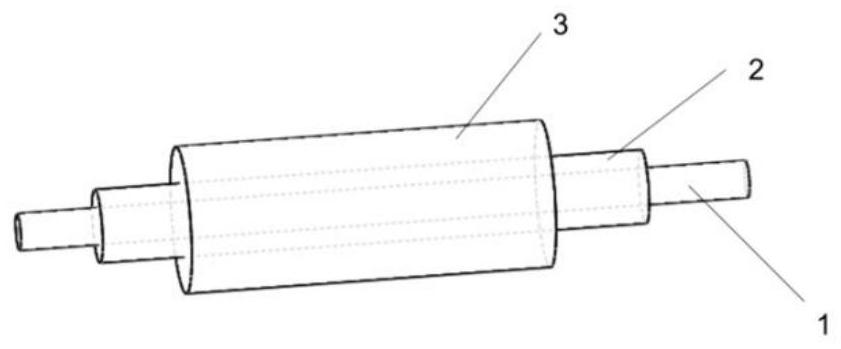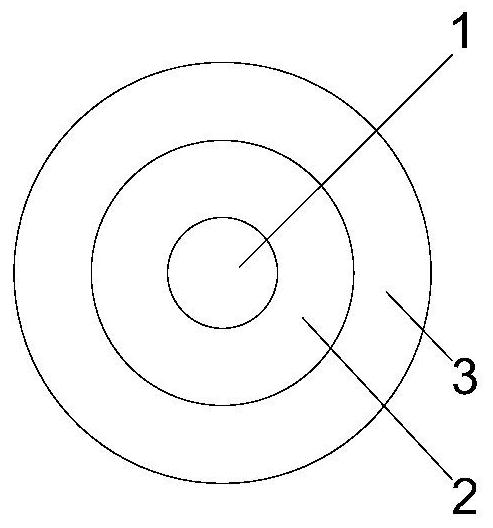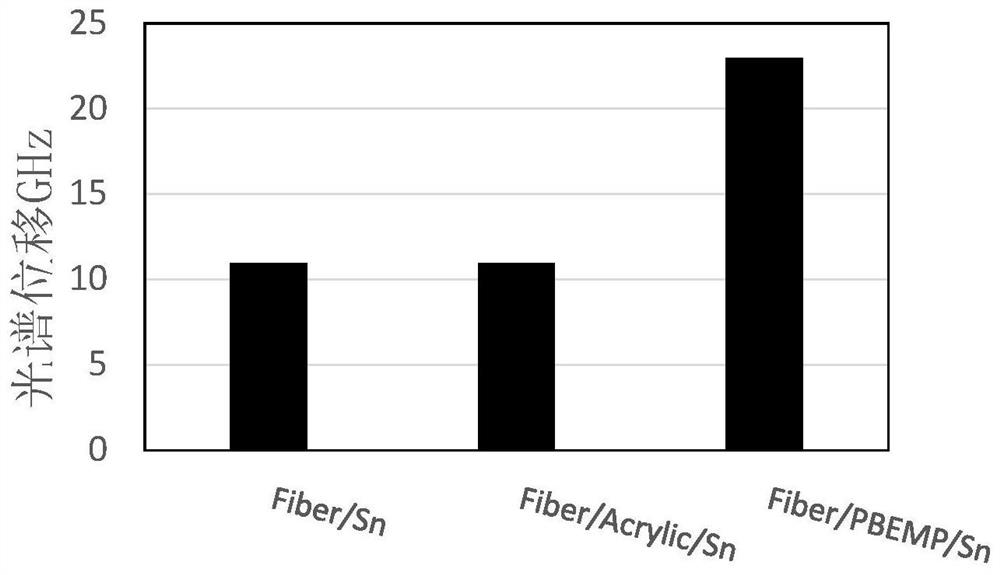Ultraviolet light cross-linked polyphosphazene, preparation method, composite coating low temperature temperature measuring optical fiber, and preparation method
A temperature-measuring optical fiber and composite coating technology, which is applied in clad optical fiber, multi-layer core/clad optical fiber, coating, etc., can solve the problem of difficult to meet the temperature measurement requirements of high-temperature superconducting equipment and the interference of electrical signal sensors , low-temperature sensitivity degradation of optical fiber, etc., to avoid cracking and interface bonding force deterioration, no side reactions, and good thermal stability
- Summary
- Abstract
- Description
- Claims
- Application Information
AI Technical Summary
Problems solved by technology
Method used
Image
Examples
Embodiment 1
[0040] This embodiment first prepares PBEMP, comprises the following process:
[0041] First, 0.05 mole of sodium butoxyalkoxide, 0.10 mole of sodium glycidoxyl alkoxide and 0.05 mole of sodium hydroxyethyl methacrylate were dissolved in 1000 ml of dry tetrahydrofuran solvent to prepare a nucleophilic substitution salt solution;
[0042] Subsequently, the above-mentioned salt solution was slowly added dropwise to 500 ml of dry tetrahydrofuran solution containing 0.1 mole of polydichlorophosphazene under ice-water bath conditions, and the reactants were stirred and reacted for 24 hours at room temperature and under nitrogen protection conditions; after the reaction, The reaction product is extracted and dried to obtain [N=P] n (OC 4 h 9 ) 0.25 (OCH 2 CHOCH 2 ) 0.50 (OCH 2 CH 2 OOCC (CH 3 )=CH 2 ) 0.25 , number average molecular weight M n >10000.
[0043] Next, PBEMP is used to make a composite coated cryogenic temperature measurement optical fiber, including the f...
Embodiment 2
[0049] This embodiment first prepares PBEMP, comprises the following process:
[0050] First, 0.10 mole of sodium butoxyalkoxide, 0.05 mole of sodium glycidoxyl alkoxide and 0.05 mole of sodium hydroxyethyl methacrylate were dissolved in 1000 ml of dry tetrahydrofuran solvent to prepare a nucleophilic substitution salt solution;
[0051] Subsequently, the above-mentioned salt solution was slowly added dropwise to 500 ml of dry tetrahydrofuran solution containing 0.1 mole of polydichlorophosphazene under ice-water bath conditions, and the reactants were stirred and reacted for 24 hours at room temperature and under nitrogen protection conditions; after the reaction, The reaction product is extracted and dried to obtain [N=P] n (OC 4 h 9 ) 0.50 (OCH 2 CHOCH 2 ) 0.25 (OCH 2 CH 2 OOCC (CH 3 )=CH 2 ) 0.25 , number average molecular weight M n >10000.
[0052] Next, PBEMP is used to make a composite coated cryogenic temperature measurement optical fiber, including the f...
Embodiment 3
[0057] This embodiment first prepares PBEMP, comprises the following process:
[0058] First, 0.09 mole of sodium butoxyalkoxide, 0.09 mole of sodium glycidoxyl alkoxide and 0.02 mole of sodium hydroxyethyl methacrylate were dissolved in 1000 ml of dry tetrahydrofuran solvent to prepare a nucleophilic substitution salt solution;
[0059] Subsequently, the above-mentioned salt solution was slowly added dropwise to 500 ml of dry tetrahydrofuran solution containing 0.1 mole of polydichlorophosphazene under ice-water bath conditions, and the reactants were stirred and reacted for 24 hours at room temperature and under nitrogen protection conditions; after the reaction, The reaction product is extracted and dried to obtain [N=P] n (OC 4 h 9 ) 0.45 (OCH 2 CHOCH 2 ) 0.45 (OCH 2 CH 2 OOCC (CH 3 )=CH 2 ) 0.10 , number average molecular weight M n >10000.
[0060] Next, PBEMP is used to make a composite coated cryogenic temperature measurement optical fiber, including the f...
PUM
| Property | Measurement | Unit |
|---|---|---|
| thickness | aaaaa | aaaaa |
| thickness | aaaaa | aaaaa |
| thickness | aaaaa | aaaaa |
Abstract
Description
Claims
Application Information
 Login to View More
Login to View More - R&D
- Intellectual Property
- Life Sciences
- Materials
- Tech Scout
- Unparalleled Data Quality
- Higher Quality Content
- 60% Fewer Hallucinations
Browse by: Latest US Patents, China's latest patents, Technical Efficacy Thesaurus, Application Domain, Technology Topic, Popular Technical Reports.
© 2025 PatSnap. All rights reserved.Legal|Privacy policy|Modern Slavery Act Transparency Statement|Sitemap|About US| Contact US: help@patsnap.com



